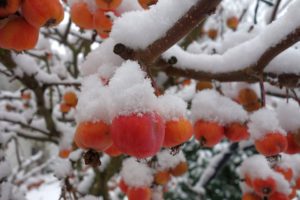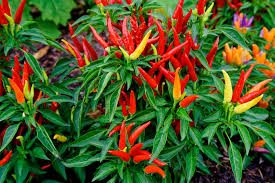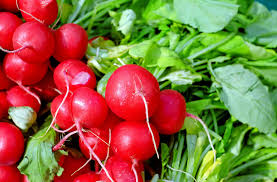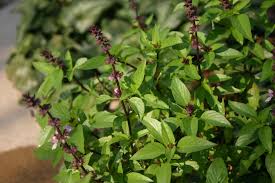A Complete Guide to Winter Seed Sowing

In a few months, we will be entering the winter season, this is the time of the year when we pull out those winter coats along with booths and gloves as we prepare for the cold months ahead. As animals go into hibernation and nature takes that long-awaited rest this gives us the opportunity to get a jump start on spring by sowing seeds which will give us a good harvest.
What is winter seed sowing?
Winter seed sowing is a practice that involves starting seeds outdoors during the winter months, this method has been around for some time. Seeds are sown outdoors in miniature greenhouses (plastic containers) during the winter months and in the spring these seeds will germinate.
The advantages of winter seed sowing
Below are a few advantages of winter seed sowing
- This method is very simple
- Cost is little to nothing
- Seeds are sown early giving you a jump start
- Seeds get adjusted to outdoor conditions
- No need for grow lights which is a $avings
- Avoiding wastage by recycling seeds
- This is an opportunity to grow your very own healthy crops without the use of harmful chemicals
- No cold stratification needed meaning that your seeds will not have to be frozen or chilled before they germinate this process (winter seed sowing) takes care of all of this for you
Winter Seed Sowing
What you will need

- Containers
- Seeds
- Good garden soil
- A secured location
- A Scissors or a sharp knife
- Permanent markers
- Plant tags
- Duct tape
Containers
The containers to be used should be plastic, containers such as ice cream containers or other dairy product containers, one-gallon jugs, etc… The containers can be of different shapes but the size ought to be large enough so once seeds germinate will allow the seedlings to sit comfortably.
If you are using one-gallon jugs cut the first top half of the jug, this first half would be a few inches below the handle and upwards. Don’t cut off this top half completely but cut enough to give you room to work with.
 A Scissors
A Scissors
With the scissors punch a few small holes at the bottom of the container, 5-6 holes should be sufficient. These holes will help with drainage.
Good garden soil
The use of good garden soil is so important because this type of soil will hold the right amount of water but will allow excess water to drain through, place the soil in the container filling it almost to the top or leaving a space of about 3 inches from the top clear of soil.
Again if you are using a one-gallon plastic container remember the top half bend it back so you can have room to work with as you add your soil and seeds. Once you have added your soil and seeds water thoroughly and return the top half to its previous position and with the duct tape of the cut area.
For other plastic containers
Installing the seeds
When installing seeds, the seeds should be spaced in the container to give them room to grow as they germinate so don’t overcrowd the container make sure that the containers have holes for water drainage.
Water your miniature greenhouse
Once your seeds are planted water thoroughly before removing them outdoors.
Plant Tags
Tag or label each container to keep track of what you are growing.
Permanent Maker
The use of a permanent marker by writing each plant name will help greatly.
Location
Once moved to the outdoors your containers should be placed in an area from direct sun and heavy winds.
Be Patience
I know that you’re ready to reap a harvest but while you are waiting keep a check on your plants, seeds may germinate at different times but during the late winter to early spring when the weather starts to warm you should notice seed germination.
As the weather warms up ensure that the soil doesn’t dry out because this is one of the most critical times for your seedlings. Before removing your seedlings from their miniature greenhouses to their permeate location in the garden ensure that they are tall enough, I would say from 3-4 inches, and have grown their first set of leaves.
Seeds that performs well sowing for the winter
Below are a few plants that perform well with this method

- Carrots
- Tomatoes
- Broccoli
- Spinach
- Onion
- Cabbage
- Radishes
- Beets
- Cosmos
Basils-winter-seed-sowing - Petunias
- Peppers
- Cilantro
- Parsley
- Basil
- Sage
- Oregano
- Thyme
Additional Information
1. The use of organic fertilizer will help in giving you a good harvest if you are using synthetics read and follow the manufacturer’s label because the label is the law.
2. Ensure that you know your plants watering needs and water according to their needs.
3. Keep an eye out for garden insect pests and treat as needed. For more on the control of garden insect pests check-out the category section of this website.
4. Don’t overwater which will influence disease.
The final word
The methods of sowing seeds outdoors during the winter months is a great way to get a jump start on the season which has proven to be of great benefit so give this method a try and reap a harvest so when spring comes around you will be so happy that you sowed your seeds during those cold months.
About the author
Norman loves being in the garden, both at home and for his job....
he is 'Natures Little helper' being outdoors, growing his vegetables and flowers from an early age.
Now having spent over 22 years in the profession he want to give some of his knowledge to others...
his vast array of hints and tips you will find scattered over this site will help you no end growing plants in your garden.

